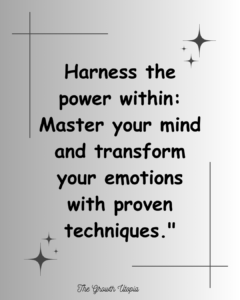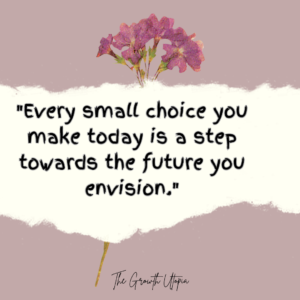Course Overview: Mastering Graphic Design – A Journey from Basics to Brilliance
Graphic design is a powerful blend of creativity and strategy. Whether you’re designing logos, websites, or marketing materials, mastering graphic design takes time, patience, and a deep understanding of both aesthetics and technical skills. This comprehensive course is designed to guide aspiring graphic designers through the foundational concepts, tools, and techniques required to become proficient in the field. Whether you’re just starting or looking to sharpen your skills, this course will cover essential aspects of graphic design, equipping you with the knowledge to create visually compelling and professional-grade designs.
Table of Contents
Course Structure
The course is divided into modules that build progressively, ensuring a clear understanding of graphic design principles and hands-on experience with industry-standard tools.
Module 1: Introduction to Graphic Design
Objective: Get familiar with the world of graphic design, its purpose, and career opportunities.
Key Topics:
- Overview of graphic design in print and digital media.
- Design roles: Branding, marketing, web design, UX/UI design, and illustration.
- The role of creativity and problem-solving in design.
Module 2: Design Fundamentals
Objective: Understand the foundational principles that govern effective design.
Key Topics:
- Color Theory: The psychology of colors, color harmony, and applying color schemes.
- Typography: Font selection, hierarchy, readability, and spacing (kerning, leading, tracking).
- Composition and Layout: Grids, rule of thirds, symmetry, and white space.
- Balance & Contrast: How to create visually appealing and balanced designs using contrast and alignment.
Module 3: Software Mastery
- Objective: Gain proficiency in industry-standard design tools and software.
- Key Tools Covered:
- Adobe Photoshop: Photo manipulation, retouching, and digital painting.
- Adobe Illustrator: Vector design, logo creation, and scalable illustrations.
- Adobe InDesign: Layout design for magazines, brochures, and multi-page documents.
- Figma & Sketch: Web and mobile interface design, prototyping, and collaboration.
This module includes hands-on exercises and projects using these tools to help solidify your skills.
Module 4: Branding and Logo Design
Objective: Learn how to create memorable branding and logos for businesses and personal brands.Key Topics:
- Understanding the brand personality and target audience.
- Conceptualizing and sketching logos.
- Designing a cohesive brand identity (logos, colors, typography).
- Packaging your designs for web and print.
Module 5: Web and User Interface (UI) Design
Objective: Build web pages and interfaces that are not only visually appealing but also user-friendly.Key Topics:
- UI/UX Design: The basics of user experience, wireframing, and designing interactive interfaces.
- Understanding responsive design and grid systems.
- Best practices for designing web layouts, buttons, and menus.
- Introduction to web fonts and digital typography.
Module 6: Building a Strong Portfolio
Objective: Learn how to present your work professionally to attract clients or land jobs.Key Topics:
- Selecting the right projects for your portfolio.
- How to showcase versatility and originality in design.
- Structuring your portfolio for digital platforms (Behance, Dribbble, personal websites).
- Tips for creating a design resume and cover letter.
Module 7: Staying Current with Design Trends
Objective: Keep up-to-date with evolving graphic design trends and styles to stay competitive.Key Topics:
- Current trends: Minimalism, bold colors, 3D design, and organic shapes.
- Incorporating trends without losing your unique style.
- Tools and resources for continuous learning.
Who Should Enroll in a Graphic Design Course?
- Beginners: If you’re just getting started in graphic design, this course provides a solid foundation and comprehensive training.
- Intermediate Designers: If you have some experience and want to advance your skills, this course covers more complex design strategies and techniques.
- Professionals from Related Fields: Marketers, web developers, or photographers can benefit from adding graphic design expertise to their skillset.
- Aspiring Freelancers: If you want to start a career in freelance design, this course will teach you how to create a successful design business and land clients.
Course Features
- Hands-On Projects: Every module includes practical assignments to apply the concepts you’ve learned, allowing you to build a diverse portfolio.
- Expert Mentorship: Access to industry professionals who will provide guidance, feedback, and real-world insights throughout the course.
- Community Access: Join a community of aspiring and professional designers for networking, feedback, and collaboration.
- Lifetime Access: All course materials are available for lifetime access, so you can revisit lessons and tutorials anytime you need a refresher.
What You Will Achieve in a Graphic Design Course
By completing a Graphic Design Course, you can expect to gain a variety of valuable skills and knowledge that will empower you in your creative career. Here are the key achievements you can look forward to:
Mastery of Design Principles
- Achievement: Develop a strong understanding of foundational design principles such as color theory, typography, composition, and visual hierarchy.
- Outcome: Create visually appealing and effective designs that communicate ideas clearly.
Strong Portfolio Development
- Achievement: Build a diverse portfolio showcasing your best work across various design projects.
- Outcome: Present a professional portfolio to potential employers or clients, highlighting your skills and unique style.
Branding and Identity Skills
- Achievement: Learn how to create cohesive brand identities, including logos, color schemes, and typography.
- Outcome: Design effective branding materials that resonate with target audiences and elevate client businesses.
Web and UI/UX Design Knowledge
- Achievement: Understand the fundamentals of web design and user experience (UX) principles.
- Outcome: Create user-friendly interfaces and visually appealing website layouts that enhance user interaction.
Advanced Design Techniques
- Achievement: Explore advanced topics such as motion graphics, 3D design, and social media content creation.
- Outcome: Add depth to your skill set, enabling you to tackle a wider range of design projects.
Networking and Collaboration Opportunities
- Achievement: Connect with fellow students, industry professionals, and mentors throughout the course.
- Outcome: Build a network of contacts that can lead to job opportunities, collaborations, and creative partnerships.
Freelancing and Business Acumen
- Achievement: Learn the basics of freelancing, client management, and marketing yourself as a designer.
- Outcome: Equip yourself with the knowledge to launch a freelance career or work effectively in a design agency.
Certification and Credibility
- Achievement: Earn a Certificate of Completion upon finishing the course.
- Outcome: Enhance your resume and demonstrate your commitment and expertise in graphic design to potential employers or clients.
Is This Course for You?
If you have a passion for creativity, a desire to learn design principles, and the motivation to build your skills, this graphic design course can benefit you. It offers flexible learning options for people at all stages of their design journey, helping you reach your creative and professional goals.














Post Comment